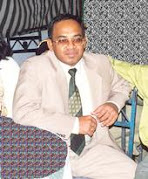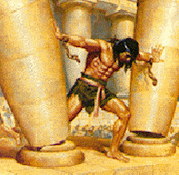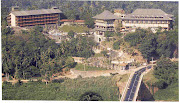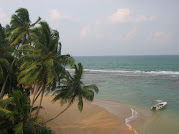
Sri Lanka holidays: no tomb
Sri Lanka Holidays bring you the Total Holiday Experience. The Land of Delights shall not flag or fail. During Sri Lanka Holidays you will have fun & frolic in the beaches, you will make merry in the hills & plains. You will enjoy the journeys as well as the destinations. You will be enlightened in the numerous cultural attractions; you will get thrilled in the numerous nature, adventure & wildlife reserves. You will have all the delights.
In the year 205 B.C., Sinhalese king Asela (215-205 B.C) of the island of Lanka was vanquished by marauding Dravidian invader from Southern India & ruled the dry plains for four decades. The appraisal of Elara (205-161 B.C.) in the Pali Chronicles is quite favourable in spite of his being a foreign invader. The Mahavamsa mentions that he was doing “even justice to friend & foe”. He was respected & esteemed by every one, including his enemies. However during his reign Buddhism & Buddhist temples at Aunradhapura suffered at the hands of marauding Dravidians. Then again, the marauding Dravidian invaders too met their mauler. Mahawamsa records how a Samsonesque Nandhimitta, who was to become one of the commanders of the King Duttha Gamini, single handedly, set about killing the marauding Dravidians: “When grown up, he came to the city & served his uncle. At that time, when Damilas desecrated thupas, etc, this strong man would trample one thigh with his foot, take the other with his hand, tear the Damilas asunder & throw them out.”
Hero of the nation, King Duttha Gamini, elder son of King Kavan Tissa of Magama & Queen Vihara Maha Devi of Kaleniya (of modern Colombo district) in the battle of Vijitapura declared that his sole intention was to protect Buddhism from the marauding Dravidian invaders. Mahavamsa narrates the words of the king: ‘This effort of mine is not for the joy of sovereignity; it is for the establishment of the faith of Buddha forever. By this truth, let the articles worn on the body of my troops take the colour of fire” Then it came to pass exactly in that manner.
‘Near the south gate of the city of Anuradhapura the two kings fought; Elara hurled his dart; Gamani evaded it; he made his own elephant pierce (Elara’s) elephant with his tusks & he hurled his dart at Elara; & this (latter) fell there with his elephant.” Mahavamsa.
King Duttha Gamani built a monument on the very spot. He had the slain enemy's body cremated & ordained worship. A pillar later was erected which read “Let no man, prince or peasant, in future pass this way riding in palanquin or litter with beating of drums”.
One & only monument of the world built in honor of a fallen enemy
Sri Lanka is the only country in the world known to have a monument built in honor of a fallen enemy. The ancient concept of tolerance of the Sinhalese has been inspired by the gentle sway of Buddhism
When Anuradhapura was being excavated by illustrious Mr. H. P. Bell (British colonial head of the dept. of Archeology in1890 & during 1893-1912) the Indian coolies who settled down around an overgrown mound of earth, owing to a lack of suitable facilities, set upon using the area for purposes far from religious. Determined to arrest the sacrilege, a Sinhala Buddhist spread rumour that the overgrown mound was in fact the tomb of the Tamil invader Elara defeated & slain by King Duttha Gamani (161-137 B.C.) The word spread around & the dirty practice of the Tamil coolies came to end. However the misnomer Elara’s tomb held fast until 1948, when the renowned Sinhalese archeologist Dr. Senerath Pranavitana declared that it might contains the ashes of King Duttha Gamani himself, who could have been cremated on this very spot.
Today, thanks to the discovery of a Brahmi inscription in the site, it is said that it was part of the Southern Monastery also called the Dakkina Vihara. It became the seat of the Sagaliya Sect which separated from the sect of Abhayagiri in the 4th century. Golden reliquaries in the shape of stupa were found during excavation.
Describing the arrival of the Bo tree, the Pali Thupawamsa, another ancient chronicle, records that they brought it by the northern gate of the city & taking it out by the southern gate, for a distance of five-hundred bow-lengths, caused it to be planted in the Maha Mega gardens.
Taking a bow-length as eight feet according to conditions then, the distance becomes 4000 feet. Mr. J.A. Balfour of Irrigation Department of Ceylon measured the distance from the sacred Bo tree to the irrigation channel which was laid by illustrious irrigation engineer Mr. H. Parker in 1887, & it was found to be 3986 feet!
Mr. Parker himself believed that the low ditch in which he laid the channel that the low ditch in which he laid the channel was the moat surrounding the ancient city of Anuradhapura. For not more than twenty feet away is an artificial hilly ridge discernible from the road, which runs through a private garden, & is easily traceable for a very long distance. This is the ruin of the wall which surrounded the ancient metropolis.
Incidentally, a few yards outside this wall, while a well was being sunk in the compound of a Government bungalow, ten feet below the surface a few granite balls of about two inches in diameter were brought to light. No such objects seem to have been discovered or are to be seen anywhere else at Anuradhapura.
The wall of the city was only some twenty yards from the location where these were found. Mahawamsa narrating the epic battle of Lanka juxtaposes a military catapult: "Stones without number hurled from engines flew about from every side.”
The southern gate having been definitely fixed the intriguing question arises as to where the elusive tomb of the Tamil marauder Elara lies. This time around there wouldn’t be a question of a tomb for the simple reason the Pol Pot suffering from wounds, diabetes & hyper tension would be entombed & flattened by the Migs & Kaffirs. He is on his last bloody leg.







































































































0 Comments:
Post a Comment